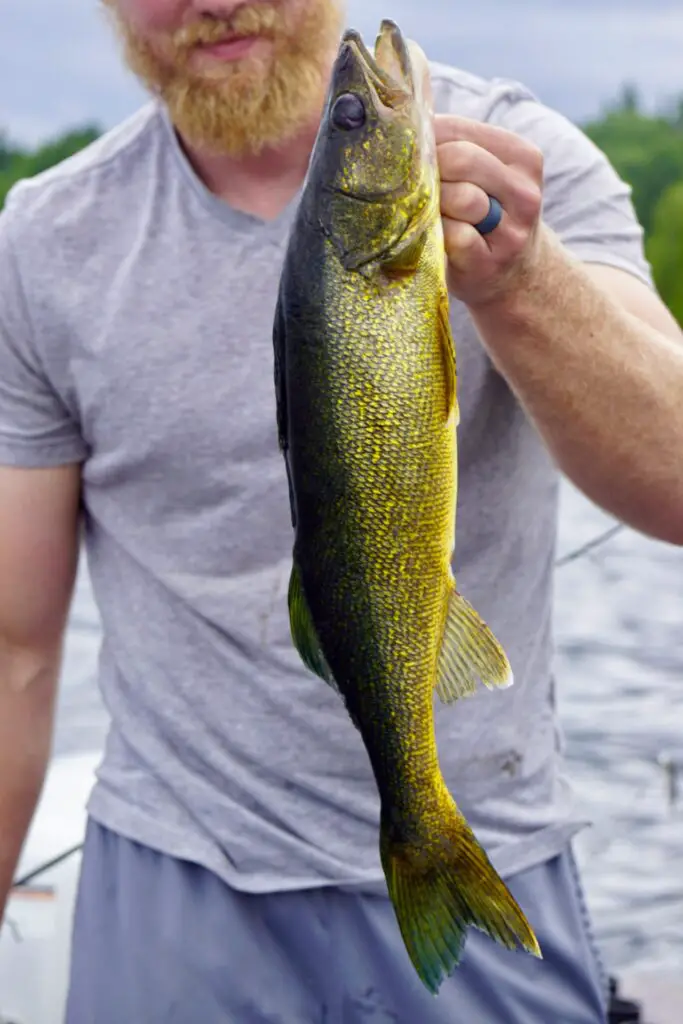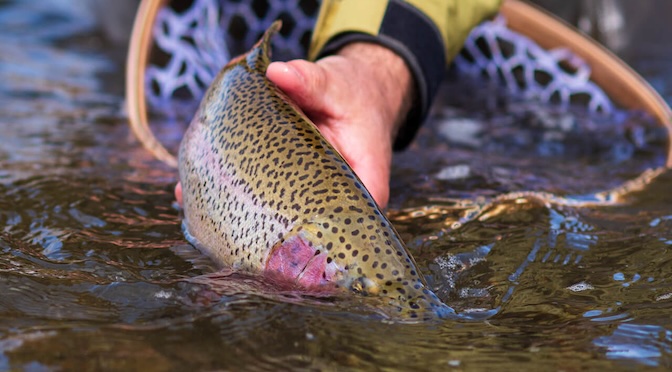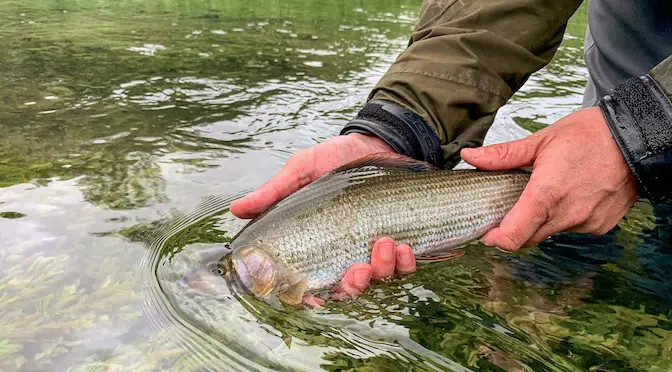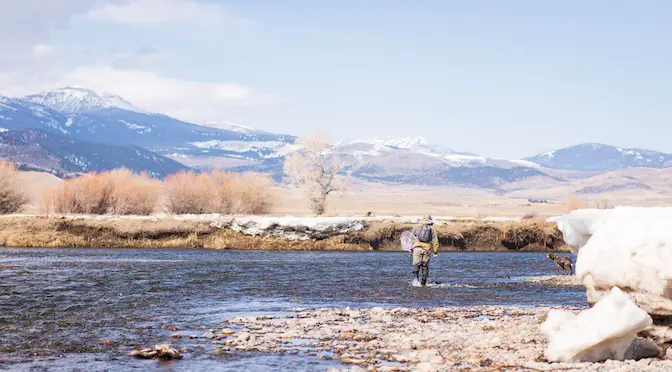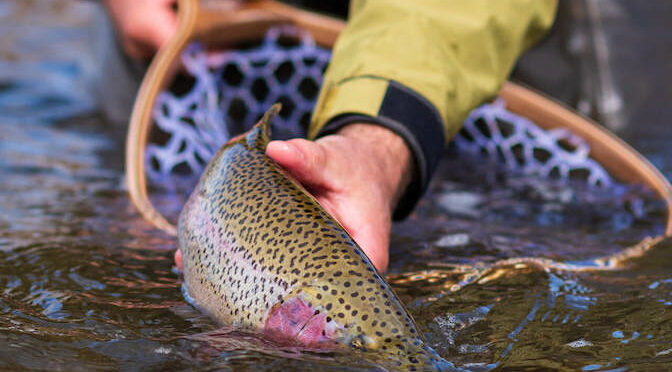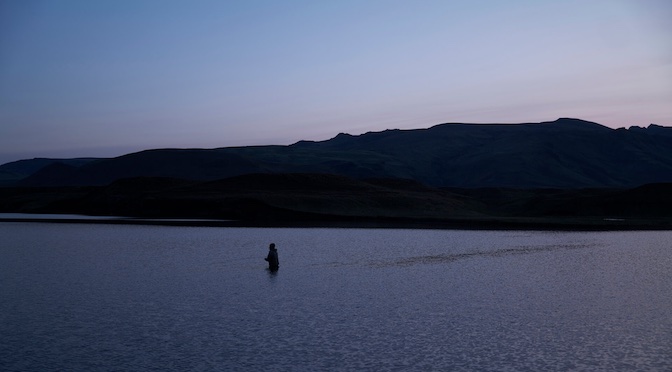- On the Water with the Korkers Bantam Lite - June 26, 2025
- How to Find Trout in Rivers & Streams Anywhere - June 13, 2025
- Educating the Next Generation of Salmon Anglers - June 4, 2025
Fly fishing is often associated with the pursuit of trout and salmon in serene rivers and streams.
But the sport’s versatility extends far beyond these traditional targets. Many fly anglers are discovering the thrill of pursuing unconventional species, adding a new level of excitement and challenge to their fishing adventures. Targeting species such as walleye, catfish, rudd, flounder, halibut, and cod on a fly rod not only broadens your horizons but also hones your skills in various environments. Let’s dive deeper into the characteristics of these species and the specific techniques required to catch them on the fly.
Freshwater Species
In the first part of this article we’ll take a look at a few freshwater species worth pursuing on a fly rod. Of course there are more than the ones mentioned here. This guide is meant as an inspiration to look beyond the evergreens of trout or bass.
Walleye
Why Walleye?
Walleye are highly prized for their delicious, flaky meat, making them a favorite among anglers who enjoy cooking their catch. Found in lakes, reservoirs, and rivers across North America, walleye are known for their elusive nature, often preferring deeper waters and low-light conditions.
Characteristics
Walleye have a distinctive appearance with their olive to golden-brown coloring, marble-like eyes, and sharp teeth. They are primarily nocturnal feeders, which adds an extra layer of challenge when targeting them during the day.
Techniques and Tips
Fly Patterns: Use streamers and baitfish imitations like the Clouser Minnow and Woolly Bugger to mimic walleye’s natural prey.
Presentation: Focus on fishing deep, as walleye often inhabit deeper water during daylight hours. Utilize sinking lines and weighted flies to reach the desired depths.
Retrieve: Employ a slow, steady retrieve to simulate injured baitfish. Incorporate occasional pauses to allow the fly to sink, which can trigger a strike.
Catfish
Why Catfish?
Catfish are known for their formidable size and strong, bulldog-like fights, offering an exciting challenge for fly anglers. These bottom-dwelling fish are found in a variety of freshwater environments, including rivers, lakes, and ponds.
Characteristics
Catfish have a distinctive appearance with their smooth, scaleless bodies, whisker-like barbels, and wide, flat heads. They are opportunistic feeders with a varied diet that includes fish, insects, and organic matter.
Techniques and Tips
Fly Patterns: Use flies that create vibration and scent, such as the Catfish Worm Fly or scented streamers.
Presentation: Fish near the bottom where catfish are likely to feed. Slow, deliberate retrieves work best, as catfish tend to scavenge along the substrate.
Scent: Consider using flies with added scent or applying scent attractants to increase your chances in low-visibility waters.
Rudd
Why Rudd
Rudd, a species often overlooked by fly anglers, are abundant in European lakes and rivers and provide a fun and accessible target.
They are known for their surface feeding habits, making them excellent candidates for dry fly fishing.
Characteristics
Rudd are small to medium-sized fish with striking, bright red fins and golden scales.
They typically feed on insects and plant matter near the water’s surface, especially during warm months.
Techniques and Tips
Fly Patterns: Small dry flies and nymphs, such as the Black Gnat or Pheasant Tail Nymph, are effective for rudd.
Presentation: Focus on surface presentations or just below the surface. Light tippets and delicate casts are key to not spooking these wary fish.
Retrieve: Use slow retrieves for nymphs and let dry flies drift naturally to mimic the insects rudd feed on.
Saltwater Species
Flounder/Flatfish
Why Flounder
Flounder, with their unique flat bodies and bottom-dwelling habits, present a distinctive fly fishing challenge. Found in coastal waters and estuaries, flounder can often be spotted buried in sand or mud, ambushing prey.
Characteristics
Flounder have a laterally flattened body with both eyes on one side, allowing them to lie flat against the ocean floor. They are ambush predators, feeding on small fish and crustaceans.
Techniques and Tips
Fly Patterns: Use weighted flies that mimic small fish or shrimp, such as the Clouser Minnow or Crazy Charlie.
Presentation: Fish close to the bottom, using a sinking line to reach the desired depth. Short, hopping retrieves work well to imitate the movement of prey.
Spotting: Look for flounder in sandy or muddy areas during tidal movements, especially where currents bring food.
Halibut
Why Halibut
Halibut are large, powerful fish that are highly sought after for their size and fighting ability. Catching one on a fly rod is a remarkable feat. These bottom-dwellers are found in deeper coastal waters, often near rocky structures or sandy bottoms.
Characteristics
Halibut have a similar body structure to flounder, being laterally flattened with eyes on one side. They can grow to impressive sizes, with some individuals weighing hundreds of pounds.
Techniques and Tips
Fly Patterns: Use large, weighted flies that imitate baitfish or squid, such as the Halibut Fly or large Deceiver patterns.
Gear: Heavy-duty gear is essential, including strong rods, reels, and tippets capable of handling large fish.
Technique: Fish deep with fast-sinking lines and use a slow, steady retrieve to attract halibut from the bottom. Be prepared for powerful runs once hooked.
Cod
Why Cod?
Cod are popular targets in colder northern waters, known for their size and strong, steady fights. Fly fishing for cod introduces a new dimension to traditional methods, offering a rewarding challenge.
Characteristics
Cod are distinguished by their elongated bodies, barbels on their chins, and a variety of color patterns depending on their environment. They inhabit deeper waters, often around rocky structures and wrecks.
Techniques and Tips
Fly Patterns: Large streamers and baitfish patterns, such as the Clouser Minnow and Bucktail Jig Fly, are effective.
Depth: Focus on deep water structures using sinking lines to reach where cod are typically found.
Retrieve: A slow, steady retrieve or jigging motion works best to entice cod to strike. Pay attention to the bottom structure and fish near drop-offs and underwater features.
Conclusion
Expanding your fly fishing repertoire to include unusual species like walleye, catfish, rudd, flounder, halibut, and cod offers a world of new experiences and challenges. Each species requires different techniques, gear, and strategies, enriching your fly fishing adventures. Whether you’re fishing in freshwater or saltwater, targeting these unconventional species can enhance your skills and deepen your appreciation for the diverse opportunities that fly fishing provides. So, next time you’re planning a fishing trip, consider venturing off the beaten path and trying your hand at one of these unique and exciting species.

